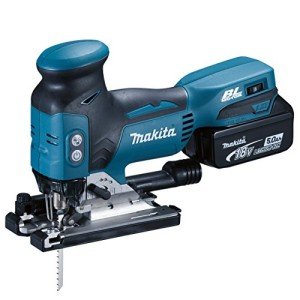In the vast and competitive landscape of the power tool industry, understanding the nuances of power tool sales is crucial for both manufacturers and retailers looking to thrive. This article delves into the strategies, trends, and best practices that can help businesses optimize their sales processes and meet the evolving needs of consumers. Whether you are a seasoned professional or a newcomer to the market, this guide aims to provide valuable insights and actionable advice.
Understanding the Power Tool Market
The power tool market is a dynamic sector that caters to a wide range of professionals and DIY enthusiasts. From electric drills and circular saws to pneumatic nail guns and cordless screwdrivers, the variety of tools available reflects the diverse needs of its users. According to recent market research, the global power tool market is expected to grow significantly over the next decade, driven by advancements in technology and increasing demand from construction, automotive, and manufacturing industries.

Key Market Segments:
- Professional Users: Electricians, carpenters, plumbers, and construction workers who require durable, high-performance tools for their daily tasks.
- DIY Enthusiasts: Homeowners and hobbyists who engage in home improvement projects and need reliable, user-friendly tools.
- Industrial Users: Large-scale manufacturing and construction companies that require specialized, heavy-duty tools for specific applications.
Trends in the Power Tool Market:
- Cordless Revolution: The shift towards cordless tools is driven by advancements in battery technology, offering users greater mobility and convenience.
- Smart Tools: Integration of IoT and AI technologies is making power tools smarter, with features like Bluetooth connectivity, real-time data tracking, and automated adjustments.
- Eco-Friendly Options: There is a growing demand for environmentally friendly tools, with manufacturers focusing on energy efficiency and sustainable materials.
Strategies for Effective Power Tool Sales
To succeed in the power tool market, businesses must adopt a multi-faceted approach that combines product knowledge, customer service, and strategic marketing. Here are some key strategies to consider:
1. Product Knowledge:
- Stay Informed: Keep up-to-date with the latest advancements in power tool technology and industry trends.
- Educate Your Team: Ensure that your sales team has a deep understanding of the products, including their features, benefits, and potential applications.
2. Customer Service:
- Build Trust: Provide excellent customer service to build trust and loyalty. This includes offering detailed product information, responsive support, and hassle-free returns.
- Personalization: Tailor your sales approach to meet the specific needs of different customer segments. For example, professional users might require more technical information, while DIY enthusiasts might benefit from user-friendly guides and tutorials.
3. Strategic Marketing:
- Digital Presence: Establish a strong online presence through a well-designed website, social media platforms, and e-commerce channels.
- Content Marketing: Create valuable content such as blog posts, videos, and how-to guides to attract and engage potential customers.
- Partnerships: Collaborate with influencers, contractors, and other industry professionals to expand your reach and credibility.
Utilizing Technology to Enhance Sales
Technology plays a pivotal role in modern power Tools Online tool sales. From online platforms to advanced data analytics, businesses can leverage various tools to improve their sales performance.
Digital Marketing Channels:
- E-commerce Platforms: Utilize platforms like Amazon, eBay, and your own website to reach a broader audience.
- Social Media: Engage with customers on platforms like Facebook, Instagram, and Twitter to build brand awareness and drive traffic to your online store.
- Email Marketing: Send regular newsletters and promotional emails to keep your customers informed about new products, special offers, and industry news.
Data Analytics:
- Customer Insights: Use data analytics to understand customer behavior, preferences, and pain points.
- Sales Forecasting: Predict sales trends and inventory needs to optimize stock management and avoid stockouts.
- Personalized Recommendations: Implement algorithms to provide personalized product recommendations based on customer browsing and purchase history.
Organizing Effective Sales Events
Sales events, both online and offline, are a powerful tool for boosting revenue and customer engagement. Here are some tips for organizing successful sales events:
1. Planning:
- Set Clear Objectives: Define what you want to achieve, whether it’s increasing sales, clearing out old inventory, or launching a new product.
- Choose the Right Time: Consider seasonality and other factors that might affect customer purchasing behavior.
2. Promotion:
- Pre-Event Marketing: Build anticipation through targeted marketing campaigns, including social media posts, email newsletters, and paid advertisements.
- Event-Day Activities: Offer live demonstrations, product giveaways, and exclusive discounts to attract and retain customers.
3. Follow-Up:
- Post-Event Communication: Send thank-you emails and special offers to customers who attended the event.
- Feedback Collection: Gather feedback to improve future events and address any customer concerns.
Case Studies: Success Stories in Power Tool Sales
Case Study 1: DeWalt’s Digital TransformationDeWalt, a leading power tool brand, underwent a significant digital transformation to enhance its online presence and customer engagement. By launching a comprehensive e-commerce platform, creating engaging content, and leveraging social media, DeWalt saw a substantial increase in online sales and customer satisfaction.
Case Study 2: Bosch’s Customer Service InitiativeBosch, another major player in the power tool market, implemented a robust customer service initiative that included a 24/7 helpline, extensive product tutorials, and a user-friendly returns process. This approach not only improved customer satisfaction but also led to a higher repeat purchase rate.
FAQs
Q: What is the most important factor in power tool sales?A: The most important factor in power tool sales is understanding the customer. This includes knowing their needs, preferences, and pain points, and tailoring your products and services to meet those needs effectively.
Q: How can businesses stay competitive in the power tool market?A: Businesses can stay competitive by continuously innovating, offering high-quality products, providing excellent customer service, and leveraging technology to enhance their sales and marketing strategies.
Q: What role does social media play in power tool sales?A: Social media plays a crucial role in power tool sales by allowing businesses to reach a broader audience, build brand awareness, and engage with customers through interactive content and promotions.
Q: Are cordless tools becoming more popular than corded tools?A: Yes, cordless tools are becoming increasingly popular due to advancements in battery technology that offer longer battery life and higher performance. They provide greater mobility and convenience, making them a preferred choice for many users.
Q: How can businesses optimize their inventory management?A: Businesses can optimize their inventory management by using data analytics to predict sales trends, implementing just-in-time inventory systems, and maintaining a flexible supply chain to quickly respond to changes in demand.
The power tool market is a fertile ground for businesses that are willing to invest in product knowledge, customer service, and strategic marketing. By staying informed about industry trends, leveraging technology, and organizing effective sales events, businesses can not only meet the needs of their customers but also achieve sustainable growth in a highly competitive market. Whether you are a manufacturer, retailer, or distributor, the key to success lies in understanding and serving your customers with the highest level of expertise and dedication.
Table: Top Power Tool Brands and Their Market Share
| Brand | Market Share (2022) | Notable Products | Key Strengths |
|---|---|---|---|
| DeWalt | 18% | Cordless drills, impact drivers | Durability, innovation, digital presence |
| Bosch | 15% | Cordless screwdrivers, jigsaws | Quality, customer service, reliability |
| Makita | 12% | Cordless mowers, leaf blowers | Performance, versatility, value for money |
| Milwaukee | 10% | Heavy-duty cordless tools | High power, robust design, long battery life |
| Black Decker | 8% | Corded and cordless tools for DIY | User-friendly, affordable, wide product range |
| Ryobi | 7% | Cordless lawn equipment | Eco-friendly, lightweight, budget-friendly |
| Skil | 5% | Basic power tools | Cost-effective, easy to use, compact design |
This table provides a snapshot of the leading brands in the power tool market, their market share, notable products, and key strengths. By understanding the competition and the unique selling points of each brand, businesses can better position themselves and their products in the market.
List of Recommended Power Tools for DIY Enthusiasts
- Cordless Drill/Driver: Essential for a variety of tasks, from hanging pictures to assembling furniture.
- Circular Saw: Ideal for cutting wood and other materials with precision.
- Jigsaw: Perfect for making curved cuts and intricate designs.
- Impact Driver: Offers more torque for driving screws and bolts.
- Reciprocating Saw: Useful for demolition and cutting through tough materials.
- Orbital Sander: Provides a smooth finish on wood and metal surfaces.
- Angle Grinder: Versatile tool for cutting, grinding, and polishing.
By offering a curated selection of tools that cater to the needs of DIY enthusiasts, businesses can attract and retain a loyal customer base.
In conclusion, the power tool sales market is ripe with opportunities for those who are willing to adapt and innovate. By following the strategies and best practices outlined in this guide, businesses can navigate the challenges and capitalize on the growth potential of this dynamic industry.






